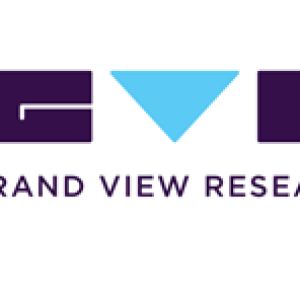Find Out More About Coronary Heart Disease Diagnostic Imaging Devices Market Global Growth With Rising CAGR And ForecastPosted by Mrudula Anil Karmarkar on October 17th, 2022 The global coronary heart disease diagnostic imaging devices market is expected to reach USD 2.96 billion by 2030, registering a CAGR of 6.9% from 2022 to 2030, according to a new report by Grand View Research, Inc. Increase in coronary diseases and deaths associated with it calls for better and early diagnosis of the condition. Precise scan interpretation and technologically advanced equipment are the factors influencing the market growth. Various imaging modalities are useful in identifying unique aspects of coronary screening. For instance, intravascular ultrasound, X-ray angiography, and computed tomography angiography (CTCA) provide a direct evaluation and quantification of alterations in the coronary arteries. However, non-invasive techniques like single-photon computed tomography (SPECT) and positron emission tomography (PET) provide indirect information on CHD by estimating the myocardial perfusion and metabolism abnormalities that are consequent of coronary artery disease. Technological advancement in this field had led to the development of sharp camera units consisting of gamma systems, that use semiconductor detectors of cadmium zinc telluride (CZT). This led to faster acquisition of images, reduced capture time, high image quality, and lower radiation dose (1mSv for a single injection), as compared to conventional myocardial perfusion imaging by SPECT. Further, improvements around Computed Tomography, to develop non-invasive techniques have also shown great future growth in this segment. However, economic barriers, subject literacy, and lack of medical staff hold back the implementation of such advanced techniques in real practice. The coronary heart disease diagnostic imaging devices market saw a sharp decline in 2020, due to the outbreak of the COVID-19 pandemic. Fear of virus spread, the shift in focus on diagnosing and treating COVID-19 affected patients, reduced admission rates at hospitals for other diseases, and reduced medical staff, led to the reduction in the diagnosis of CVD. Economic setback observed by end-users also influenced the adoption of advanced techniques to effectively diagnoses coronary alterations. Further, the shutting down of manufacturing units, due to national lockdowns, halt in logistics, and reduction in salesforce also impacted the market negatively. However, diabetic and hypertensive patients witnessed a severe risk of CVD ultimately leading to death. Thus, the pandemic significantly impacted the market in 2020, which is likely to stabilize and grow exponentially by 2022. To Request Sample Copy of this report, click the link: Factors such as a rise in cardiovascular diseases, increased need for non-invasive diagnostic techniques, rise in geriatric population, increased risk of coronary artery diseases (CAD) due to increased prevalence of obesity, and are expected to boost the coronary heart disease imaging devices market. Studies suggest that yearly, ~10 million stress tests and ~1 million cardiac catheterizations are performed in the U.S., for the identification of coronary heart disease among patients. However, insufficient reimbursement scenario, lack of skilled professionals, and high cost of medical imaging systems pose a barrier to the market growth. Coronary Heart Disease Imaging Devices Market Report Highlights
The outbreak of the COVID-19 pandemic led to the decline in screening conducted at hospitals, diagnostic centers, and ambulatory centers, for CHD. The fear of virus spread also declined any diagnostic or surgical activities at end-use settings. This eventually led to an economic crisis at hospitals, diagnostic centers, clinics, and other end-use settings, which impacted newer installations. The closure of diagnostic centers and inclination towards the diagnosis of only COVID-19-related tests further hampered the diagnostic market. National closures, halt in logistics, economic crunch, sales reduction due to reduced work staff, and a shift in focus to develop a treatment protocol such as virtual care and tele-visits also impacted new product launches or developmental activities. Hence, the pandemic led to a significant dip in the market in 2020. However. It is anticipated to stabilize by mid-2022. The enormous rise in CVD calls for better diagnostic tools and capabilities. Studies suggest that Italy has the highest prevalence of this disease within the Europe region, followed by Germany, then Spain, and lastly France. The prevalence rate ranges from ~2500 to ~3600 per hundred thousand population. In 2017, it was witnessed that ~2.5% to 3.6% population suffered from some of the other forms of CVD in these regions. Hence it calls for improved diagnosis and technologically advanced imaging devices to prevent the worsening of the disease state. List of Key Players in Coronary Heart Disease Imaging Devices Market
Like it? Share it!More by this author |


